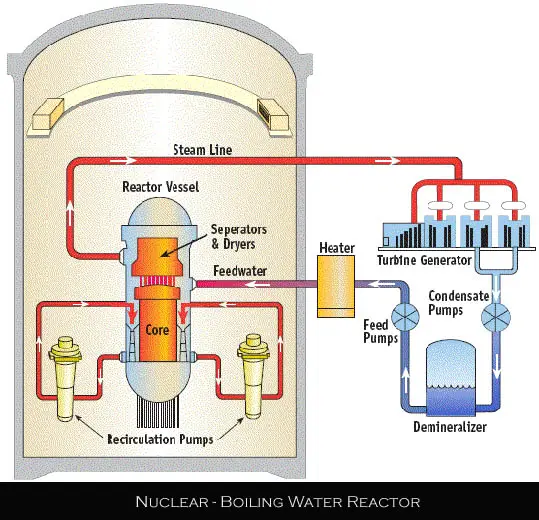The Nuclear Boiling Water Reactors (BWR) have many similarities to the Pressurized Water Reactors (PWR), except that there is only a single circuit in which the water is at lower pressure (about 75 times atmospheric pressure) so that it boils in the core at about 285ƒC. The reactor is designed to operate with 12-15% of the water in the top part of the core as steam, and hence with less moderating effect and thus efficiency there.
The steam passes through drier plates (steam separators) above the core and then directly to the turbines, which are thus part of the reactor circuit. Since the water around the core of a reactor is always contaminated with traces of radionuclides, it means that the turbine must be shielded and radiological protection provided during maintenance. The cost of this tends to balance the savings due to the simpler design. Most of the radioactivity in the water is very short-lived (about a 7 second half-life), so the turbine hall can be entered soon after the reactor is shut down.

A BWR fuel assembly comprises 90-100 fuel rods, and there are up to 750 assemblies in a reactor core, holding up to 140 tonnes of uranium. The secondary control system involves restricting water flow through the core so that steam in the top part means moderation is reduced.
There are 35 operable reactors in the United States that are BWRs. BWRs allow fission-based heat from the reactor core to boil the reactor’s coolant water into the steam that is used to generate electricity. General Electric built all boiling water reactors now operational in the United States. Areva NP and Westinghouse BNFL have each designed BWRs.
